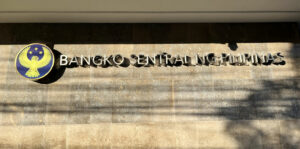THE BANGKO SENTRAL ng Pilipinas (BSP) may delay its easing cycle amid continued risks to the inflation outlook, the peso’s depreciation and a hawkish US Federal Reserve, analysts said.
“We expect BSP to start its cutting cycle only after the Fed (i.e., in October), which is when we also expect inflation to be more entrenched within BSP’s 2-4% target,” Nomura Global Markets Research said in a report.
According to Nomura data, the Philippines was among the top countries facing “underlying inflationary pressures” in Asia, second only to Singapore.
Nomura sees the BSP cutting rates by 50 basis points (bps) this year and another 100 bps in 2025.
The Monetary Board only has three policy review meetings left for the year — Aug. 15, Oct. 17 and Dec. 19.
Citi economist for the Philippines Nalin Chutchotitham said there is a chance the BSP will have a “slower” easing cycle.
“In any case, we note the risk of slower rate cuts, which most likely depend on the speed of inflation decline, the timing of the Fed’s rate cuts and potential depreciation pressure on the peso,” she said in a commentary.
Fed officials earlier signaled the possibility of rate cuts being pushed back to as late as December.
The peso has been trading at the P58-per-dollar range since May, when it sank to the level for the first time since November 2022.
However, Citi still forecasts that the BSP will begin cutting rates by August for a total of 75 bps this year.
“We continue to maintain our call for 25-bp rate cuts in August, October, and December 2024, followed by 25-bp rate cuts in February, May, and August 2025 as our base case,” she said.
Citi said that weaker-than-expected growth will also pave the way for reducing rates.
“Negative output gap projection supports monetary easing. While growth has been resilient so far, first-quarter 2024 gross domestic product (GDP) growth at 5.7% was below market’s expectation,” Ms. Chutchotitham said.
The government is targeting 6-7% growth this year.
Meanwhile, Diwa C. Guinigundo, the country analyst for the Philippines of GlobalSource Partners and former BSP deputy governor, said he sees just one rate cut by the BSP this year.
“One rate cut is therefore more likely, as the forward guidance has been quite confirmatory so far,” he said in a brief, though did not specify the timing of the cut.
“A second reduction in November or December is, as usual, data-driven both in terms of actual and projected inflation rates in the next two years. The balance of risks would also be an important metric for the BSP,” he added.
Mr. Guinigundo also said June inflation could breach the BSP’s 2-4% target amid higher food prices and the impact of the peso depreciation.
“Higher domestic production of basic commodities like grains and meat and timely importation in case of some shortfall would be key to sustained stabilization of price pressures and inflation. Non-monetary measures are important complementary policy intervention,” he said.
Inflation likely settled at 3.9% in June, based on the median estimate in a BusinessWorld poll of 14 analysts conducted last week. This would mark the seventh straight month that inflation settled within the BSP’s 2-4% target. June inflation is set to be released on Friday (July 5).
“Although difficult to pin down, a good computation of the country’s output gap will also help in ensuring that an early or more easing would not dislodge inflation expectation and add inflationary pressure to an otherwise manageable inflation scenario,” Mr. Guinigundo said.
BSP Governor Eli M. Remolona, Jr. has said that the central bank can begin policy easing as early as August.
He signaled the BSP can cut rates by a total of 50 bps this year — a 25-bp cut in the third quarter and another in the fourth quarter. — Luisa Maria Jacinta C. Jocson
